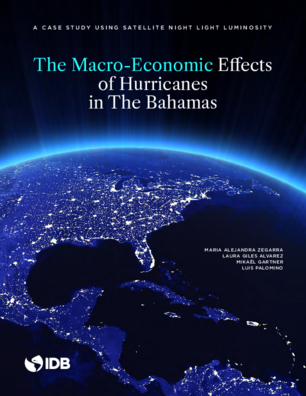The Macro-Economic Effects of Hurricanes in The Bahamas: A Case Study Using Satellite Night Light Luminosity
Date
Sep 2021
This paper analyses the macroeconomic effects of Hurricanes Joaquin (2015), Matthew (2016), Irma (2017), and Dorian (2019) across different islands in The Bahamas. The methodology used, based on Zegarra et al. (2020), uses historical night light intensity data between 2015 and 2019 and monthly GDP. The analysis is complemented by a breakdown of the direct and indirect costs by island that compiles the information in the four Damages and Losses Assessments conducted by the Economic Commission on Latin America and the Caribbean and the Inter-American Development Bank. The results suggest, first, that the year-to-year nominal growth rate in The Bahamas decreased during the month and quarter of each hurricane event, but that there was no contraction of the countrys growth rate in the year of the event. However, all islands showed a significant contraction in GDP after the start of the COVID-19 outbreak, which overlapped with the effects of Hurricane Dorian. Second, large islands like New Providence and Grand Bahama experienced larger GDP contractions following the hurricanes, but no such clear pattern was obtained for the Family Islands. Third, macroeconomic recovery times to achieve pre-hurricane GDP levels took between 4-8 months on average for the four events studied. Fourth, the composition of sectors affected by the events did not seem to have a major effect on the severity of the economic shock. For all the hurricanes studied, tourism, transport infrastructure, and housing were recurrently the most affected sectors. Based on the findings of the analysis, recommendations include the following: (1) Make greater use of these methodologies to study the macroeconomic effects of natural disasters, supplemented by microeconomic, social, and sector-specific studies; (2) Conduct further analysis of island-specific economic drivers and post-hurricane economic effects; and (3) Promote climate change adaptation and disaster risk management to reinforce macroeconomic resilience in sectors that drive national GDP and to foster resilience in sectors and on islands.




